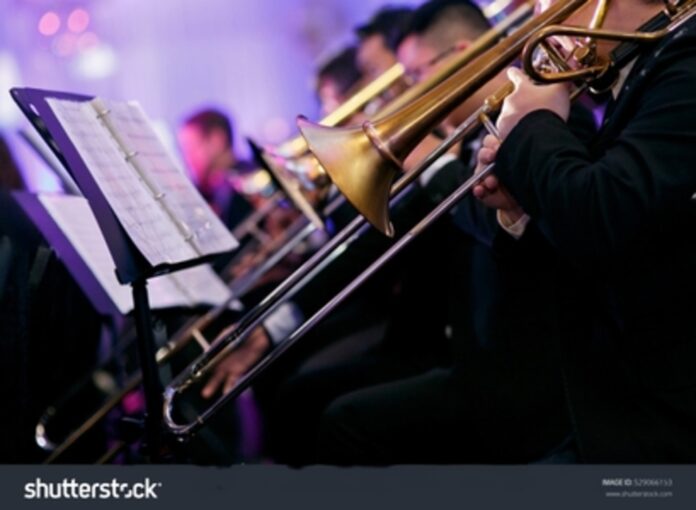Musical ensembles have long been the heartbeat of the music world, weaving intricate tapestries of sound that captivate audiences and stand as a testament to the collaborative nature of the art form. As we delve into the latest news and developments in musical ensembles, we must explore the advantages, disadvantages, and the dynamic interplay that defines these groups.
The State of Musical Ensembles Today:
What defines a musical ensemble?
Answer: A musical ensemble is a group of musicians who perform together, creating a collective musical experience that goes beyond individual players’ capabilities.
How have musical ensembles evolved?
Answer: From classical orchestras to contemporary jazz bands and experimental electronic groups, musical ensembles have evolved to embrace diverse genres and styles, reflecting the ever-changing landscape of music.
What are the key components of a successful musical ensemble?
Answer: Communication, collaboration, and a shared musical vision are essential components of a successful ensemble. These factors contribute to cohesion and a unified performance.
 Musical Ensembles
Musical Ensembles
Advantages of Musical Ensembles:
Enhanced Creativity:
How do musical ensembles foster creativity among musicians?
Answer: Collaborative environments allow musicians to explore new ideas, harmonize diverse influences, and create innovative compositions that may not be achievable in isolation.
Skill Development:
In what ways do musical ensembles contribute to individual skill development?
Answer: Musicians in ensembles refine their technical skills, learn to synchronize with others, and gain exposure to different playing styles, thus enhancing their overall musical proficiency.
Richer Soundscapes:
How does the combination of different instruments contribute to a richer musical experience?
Answer: The amalgamation of various instruments and voices in an ensemble creates multi-layered, textured soundscapes that engage and captivate listeners, offering a depth that solo performances may need to improve.
Community Building:
What role do musical ensembles play in building community among musicians?
Answer: Ensembles foster a supportive community where musicians collaborate, share experiences, and build lasting connections, creating a sense of camaraderie that extends beyond the stage.
Disadvantages and Challenges of Musical Ensembles:
Coordination Issues:
What challenges arise in coordinating multiple musicians in an ensemble?
Answer: Achieving perfect synchronization can be challenging, with potential issues such as timing discrepancies, communication gaps, and differing interpretations of the music.
Artistic Differences:
How do artistic differences among ensemble members impact the creative process?
Answer: Differing artistic visions may lead to conflicts within the ensemble, requiring effective communication and compromise to maintain a cohesive musical identity.
Logistical Challenges:
What logistical challenges do musical ensembles face regarding rehearsal schedules, venue availability, and equipment coordination?
Answer: Coordinating the schedules of multiple musicians, finding suitable rehearsal spaces, and ensuring access to necessary equipment can pose logistical challenges for ensembles.
Group Dynamics:
How do interpersonal dynamics within an ensemble influence the overall performance?
Answer: Positive group dynamics contribute to a harmonious performance, while conflicts or lack of cohesion may result in a disjointed and less impactful musical experience.
Noteworthy Developments in Musical Ensembles:
Technological Advancements:
How has technology influenced the dynamics of musical ensembles?
Answer:Advancements in recording, live streaming, and digital collaboration platforms have expanded the possibilities for ensembles, allowing them to reach global audiences and collaborate remotely.
Fusion of Genres:
How are ensembles blending different musical genres to create innovative and hybrid sounds?
Answer: Contemporary ensembles are increasingly experimenting with genre fusion, blending classical, jazz, electronic, and world music influences to create unique and eclectic musical expressions.
Inclusivity and Diversity:
How are musical ensembles working towards greater inclusivity and diversity?
Answer: Ensembles recognise the importance of diversity in their compositions and memberships, embracing musicians from various backgrounds to bring diverse perspectives to their performances.
Conclusion:
In conclusion, the world of musical ensembles continues to evolve, presenting opportunities and challenges for musicians and audiences. The advantages of enhanced creativity, skill development, richer soundscapes, and community building highlight the enduring appeal of musical collaboration. However, it’s essential to acknowledge and address the disadvantages and challenges, such as coordination issues, artistic differences, logistical hurdles, and group dynamics.
As we celebrate the vibrancy of musical ensembles and their contributions to the cultural tapestry, embracing the evolving landscape, incorporating technological advancements, genre fusion, and a commitment to inclusivity is crucial. The journey of musical ensembles is a dynamic symphony, echoing the ever-changing rhythms of our diverse and interconnected world.
visit:infomagzines.com















